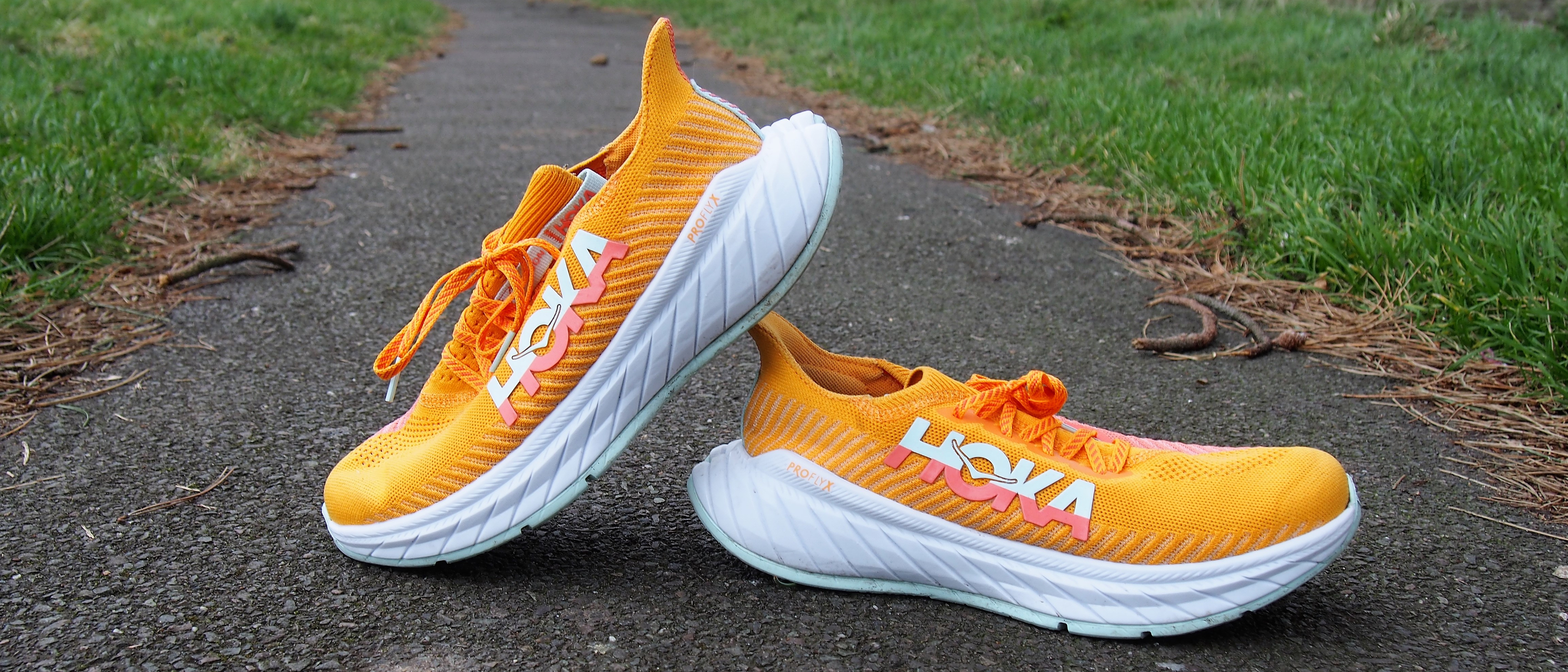TechRadar Verdict
The Hoka Carbon X3 feels like a shoe for big training runs and will certainly appeal to ultrarunners looking for something with a comfortable upper. Just don’t expect it to give you that nice, speedy feeling like other big-name carbon shoes.
Pros
- +
Soft knit upper
- +
Works best for easy runs
- +
Great look
Cons
- -
Underwhelming new foam
- -
Long fit
- -
Slippy upper at the heel
Why you can trust TechRadar
Two-minute review
The Hoka Carbon X3 is a shoe built for endurance runners. Hoka has planted its new midsole foam and a knit upper on this successor to the X2, with a carbon fiber plate sandwiched by that new foam and an aggressive Meta-Rocker to promise a comfortable, responsive feeling underfoot.
Running in the X3 doesn’t give you that exciting sensation you get from a top-tier carbon shoe. The fit also felt a bit long, and while that knit upper sits snug, we had some slipping at the heel. That new ProFlyX midsole just didn’t feel all that energetic or as bouncy as we’d hoped, either.
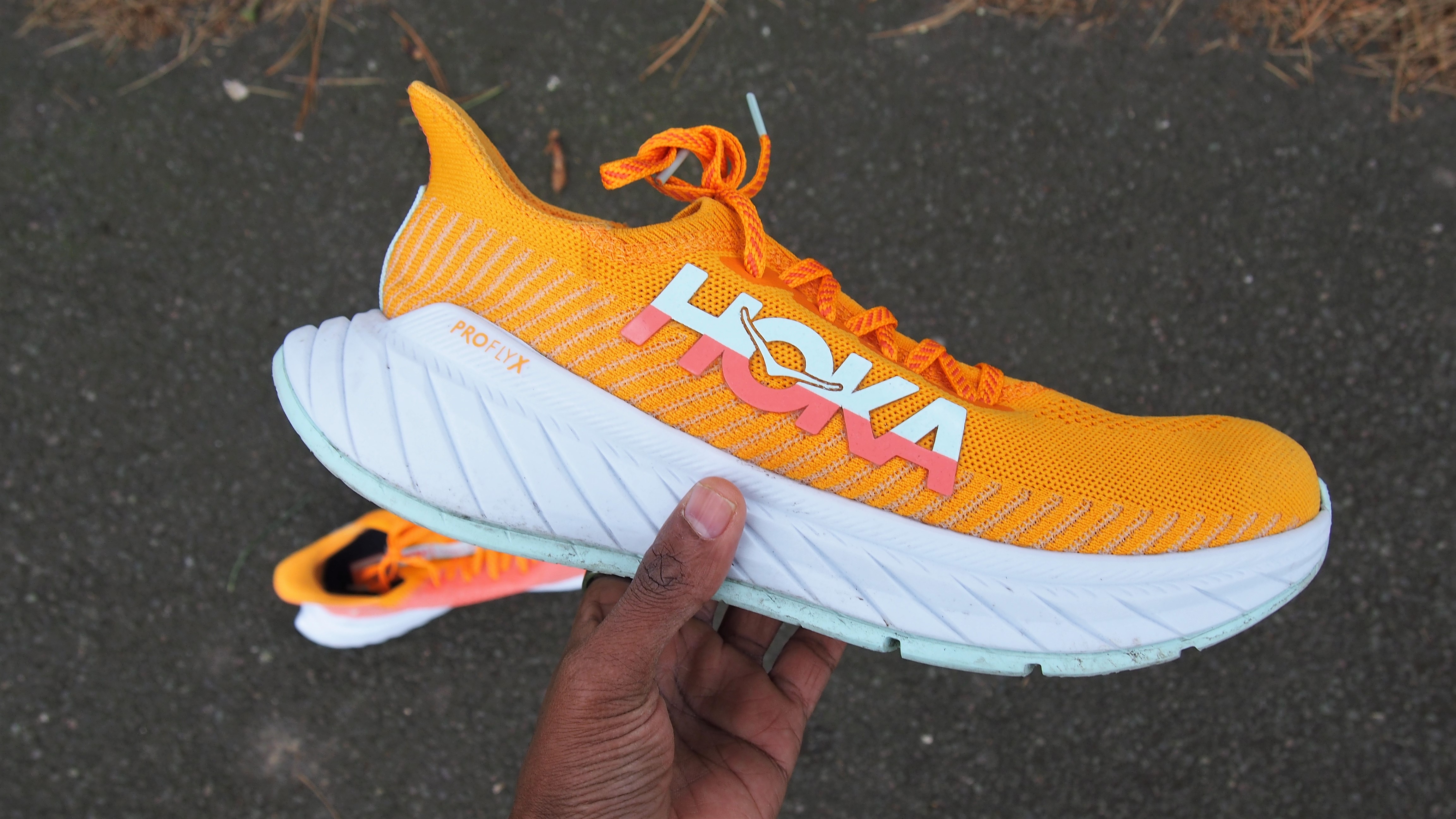
If you liked the Carbon X2 and would happily swap the mesh upper for a knit one and a less firm midsole, then you’ll appreciate some of the changes made on the Carbon X3. If you’re hoping it can sit alongside carbon racer shoes from the likes of Nike, Adidas, Asics and Saucony, sadly that’s not the case here.
It’s a shoe that can work for going far and logging big distances, but you could pick up a more versatile shoe that works for a range of sessions and paces for the same money, or less.
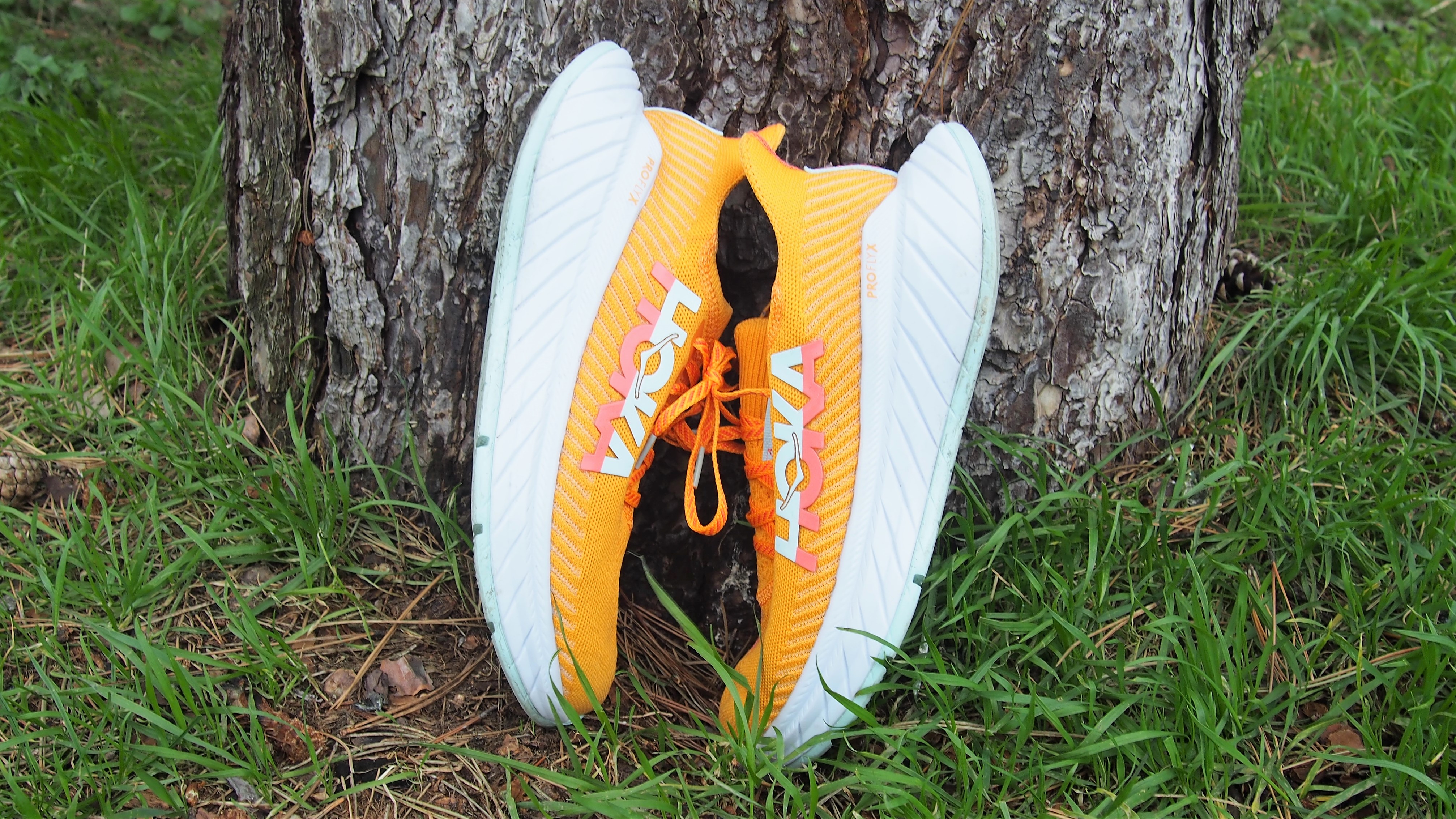
Price and release date
The Hoka Carbon X3 will launch on March 1 2022, and will be available direct from Hoka priced at $180 / £160 (about $250). That's slightly less than the similarly carbon-equipped Hoka One One Bondi X, which launched in September 2021.
Design
Hoka has made some sizable changes, which mean the X3 feel like a markedly different shoe to the X2. For starters, it's swapped mesh and ditched the tongue for an engineered knit upper, which is intended to make it a more breathable and lighter shoe overall. The shoe weighs 188g for the women’s version and 222g for the men’s – around 20g less than its predecessor.
That upper hugs a bit closer, and the flat laces don’t add any unwelcome pressure on the top of the foot. Unfortunately, the UK size eight we had to test out ran noticeably long, so you may want to consider going a size down based on our testing. There’s ample space up front in the toe box, but for us, it was just a little too much.
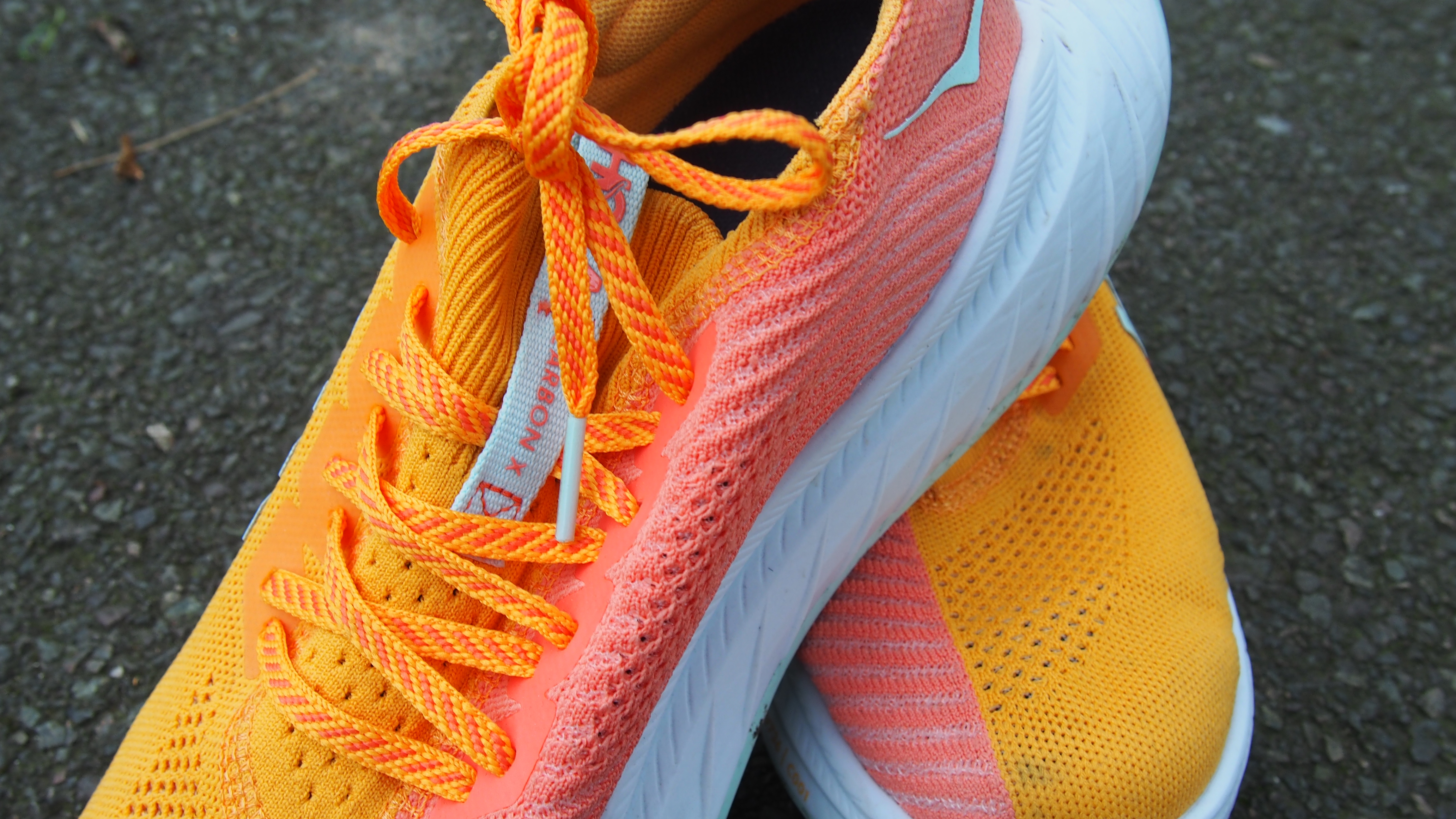
Elsewhere, Hoka has dropped an extended heel tab to make it easier to get on, and retained the swallow tail to generate a smoother landing. Just like the X2 though, it didn’t feel hugely noticeable during our runs. The company has also included its new ProFly midsole, which is made up of soft and a firm layer of EVA foam to offer cushioning that’s both balanced and responsive.
On the outsole, Hoka has used rubberized EVA to offer good grip throughout the shoe. It definitely felt well built for sticking to roads, pavements and treadmill time. Even a bit of off-road time is going to put that outsole at risk and eat into its durability.
We do have to give a special mention to the colourway here, which is channelling serious fruit salad sweets vibes based on Hoka’s colour choices here. It undeniably stands out and if you like a shoe with a bold, eye-grabbing look, the X3 certainly delivers on that front.
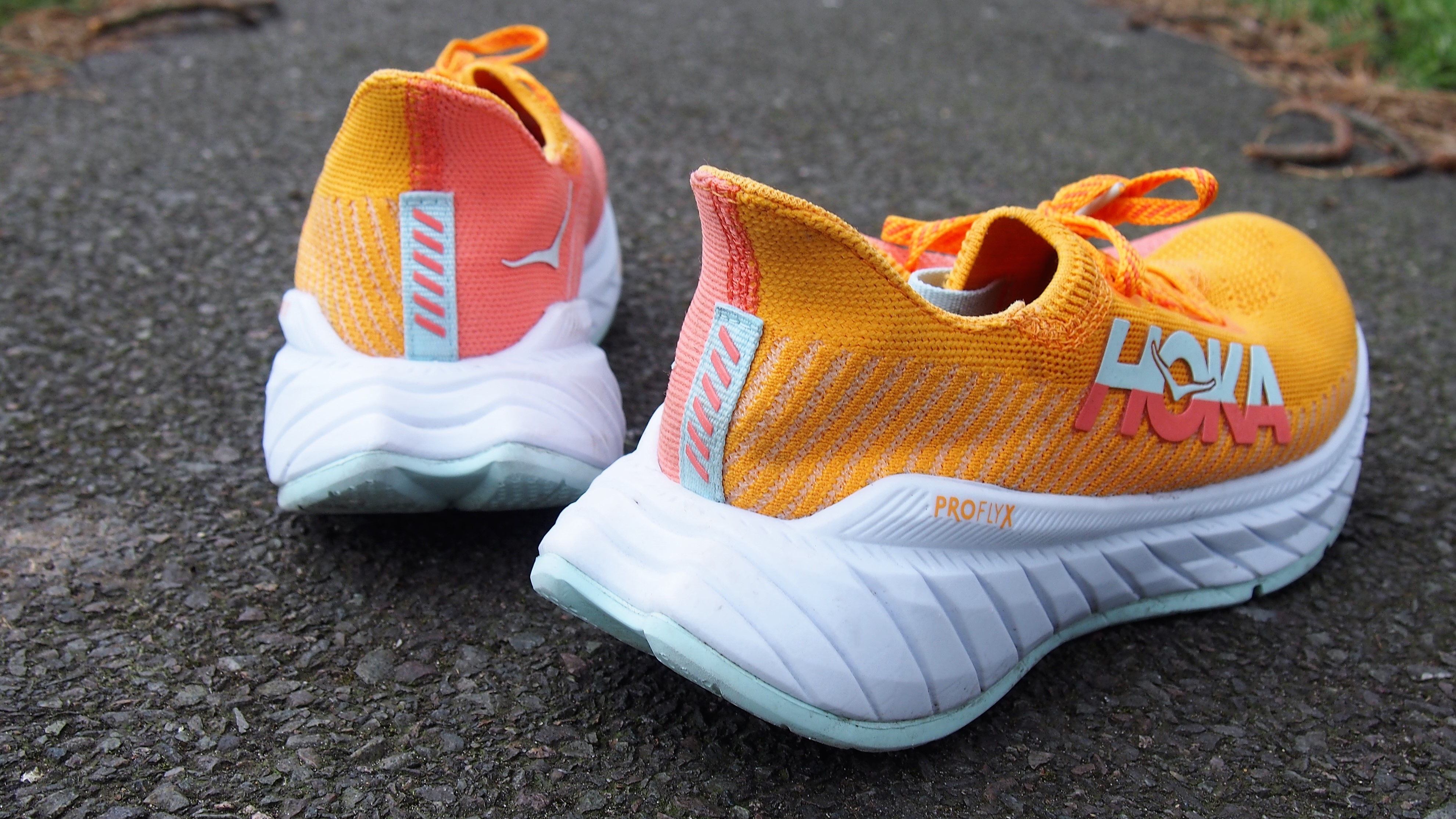
Performance
While the X3 does pack a carbon plate like a lot of speedy shoes do these days, it certainly wasn’t a shoe that gave us that fast feeling.
We did well over 60km of running in it with a mixture of short 5k runs, quicker interval work, some tempo training, and a couple of longer runs too. On the shorter, quicker stuff, the length of the shoe and some heel slippage we experienced instantly made it a tough shoe to get on with.
Trying to go fast didn’t feel particularly enjoyable either. The new midsole foam didn’t produce a very excitable bounce and while it’s not a firm midsole and generally felt stable to run in, speed didn’t feel like the X3’s forte.
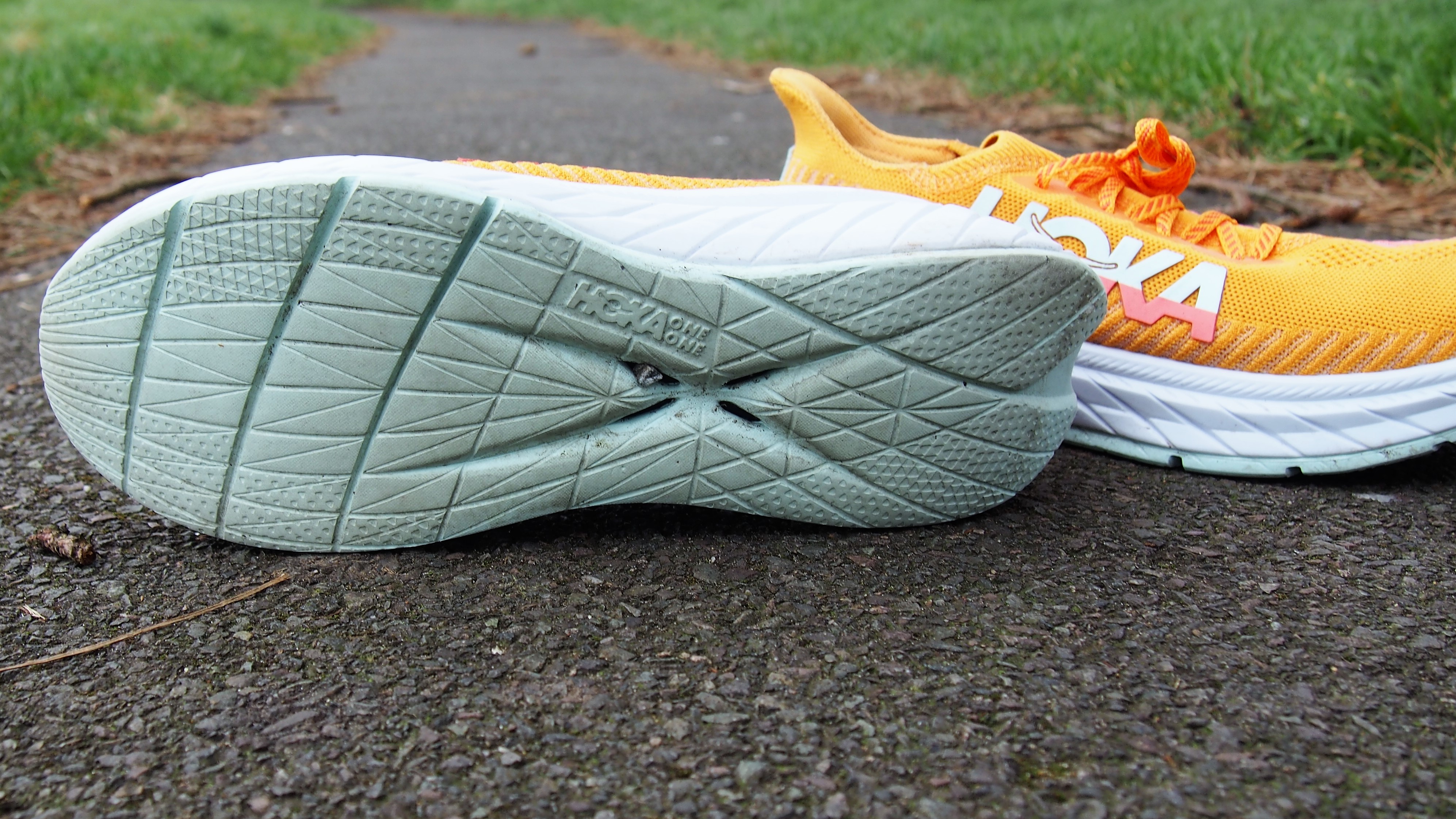
When we decided to slow things down instead, we’d hoped the X3 would come into its own. It did suit that slower pace better, and every stride felt as consistent as the last, but there wasn’t anything here that felt particularly new or groundbreaking. The upper elements that work do make it a comfortable shoe to dial down the pace, but ultimately the ride felt pretty uninspiring.
It feels like the opposite of what it was like running in the Carbon X2 which actually felt surprisingly snappy to run fast in and a bit laboured to run slow in. Versatility doesn’t seem to be a strength for the X3.
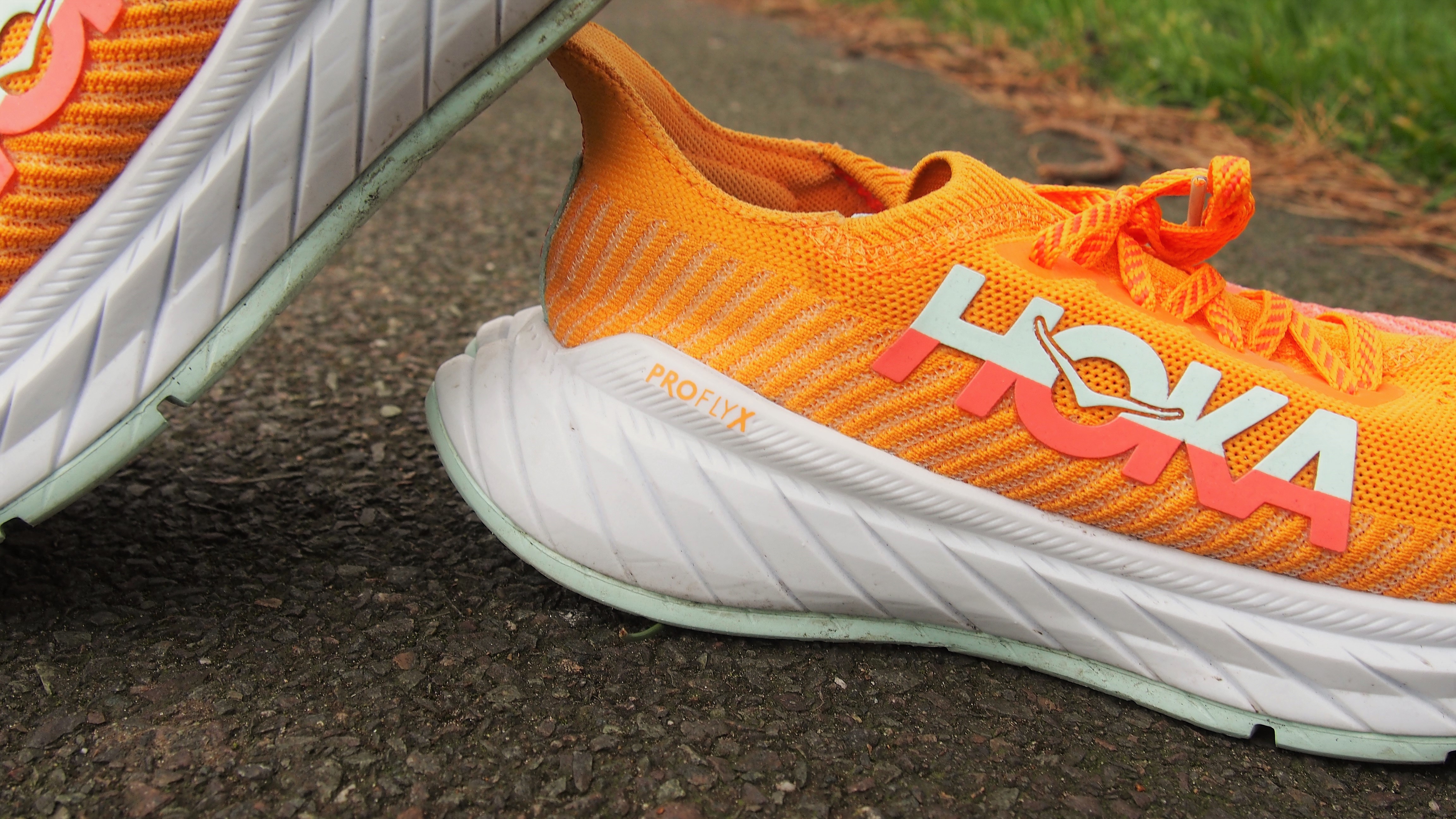
The Carbon X3 will appeal if you get a fit that works and you want an exciting-looking shoe that actually functions best when you’re not gunning to go at your quickest. There are better options out there though and in Hoka’s own range that will work at a range of paces and offer a comfortable upper too. Hoka’s own Mach 4 springs to mind, as does the excellent Saucony Endorphin Speed 2 with both able to work as strong race day options.
There’s elements of a potentially good shoe here but as a whole, the X3 didn’t feel like it excelled or blew us away in any department.
First reviewed February 2022
Buy it if
You want a comfortable coaster
As long as you get a good fit, the X3 can be a shoe to go longer with a lightweight and breathable design.
You want a more affordable carbon shoe
It’s no Nike, Adidas or Asics racer shoe, but if you want to spend less on a carbon plate-packing shoe that offers elements of that experience, then it may well appeal.
Don't buy it if
You want a shoe to go fast in
The Carbon X3 might look like a shoe built for speed, but that’s not the overall feeling you get when you run in them
You want a low-key shoe
Just look at that colourway. If you don’t like bold, then this is not the shoe for you.
Michael is a freelance journalist who has covered consumer technology for over a decade and specializes in wearable and fitness tech. Previously editor of Wareable, he also co-ran the features and reviews sections of T3, and has a long list of bylines in the world of consumer tech sites.
With a focus on fitness trackers, headphones, running wearables, phones, and tablet, he has written for numerous publications including Wired UK, GQ, Men's Fitness, BBC Science Focus, Metro and Stuff, and has appeared on the BBC Travel Show. Michael is a keen swimmer, a runner with a number of marathons under his belt, and is also the co-founder of YouTube channel The Run Testers.
